Abstract
The evidence for two functional roles of M. accessorius interosseus can be adduced as follows: (1) abduction of the whole finger is clearly required to resist the force of the thumb against the index during pinch grasp (Fig. 4) and when greater resistance is applied to the food, activity increases in the muscle. (2) The muscle also flexes the metacarpophalangeal joint at the onset of grasp on the ladder rung. In hanging from the finger tips or from the cage top, with the metacarpophalangeal joints extended, the muscle goes silent. From the functional point of view, the name given by Huxley (1871) to the M. accessorius interosseus ('abductor tertii internodii secundi digiti') is perhaps the most appropriate one. For reasons of economy, however, we favour continued use of the nomen Musculus accessorius interosseus (Fitzwilliams, 1910) or accessory interosseous muscle. The name coined by Keith (1894; p. 299) which implies that this muscle is an extensor of the distal interphalangeal joint, and any suggestions that the muscle functions primarily to flex the proximal interphalangeal joint are less appropriate or in error. The EMG data reveal that the M. accessorius interosseus is primarily an abductor of the index finger in gibbons, and we suggest that it is a unique feature of lesser apes that has evolved in compensation for a deep thumb-index cleft and the loss of the radial moiety of the first dorsal interosseous muscle. The primary role of this specialized muscle is in thumb-index pinch grasping.
Full text
PDF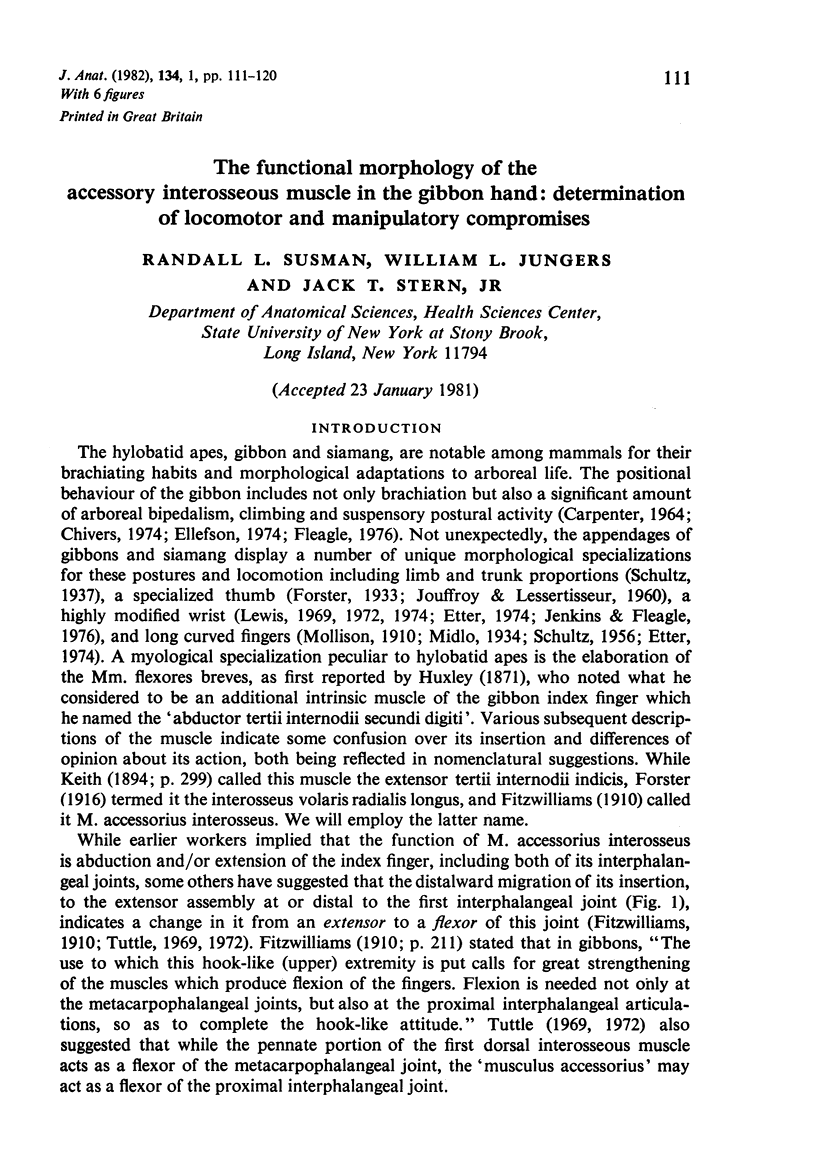
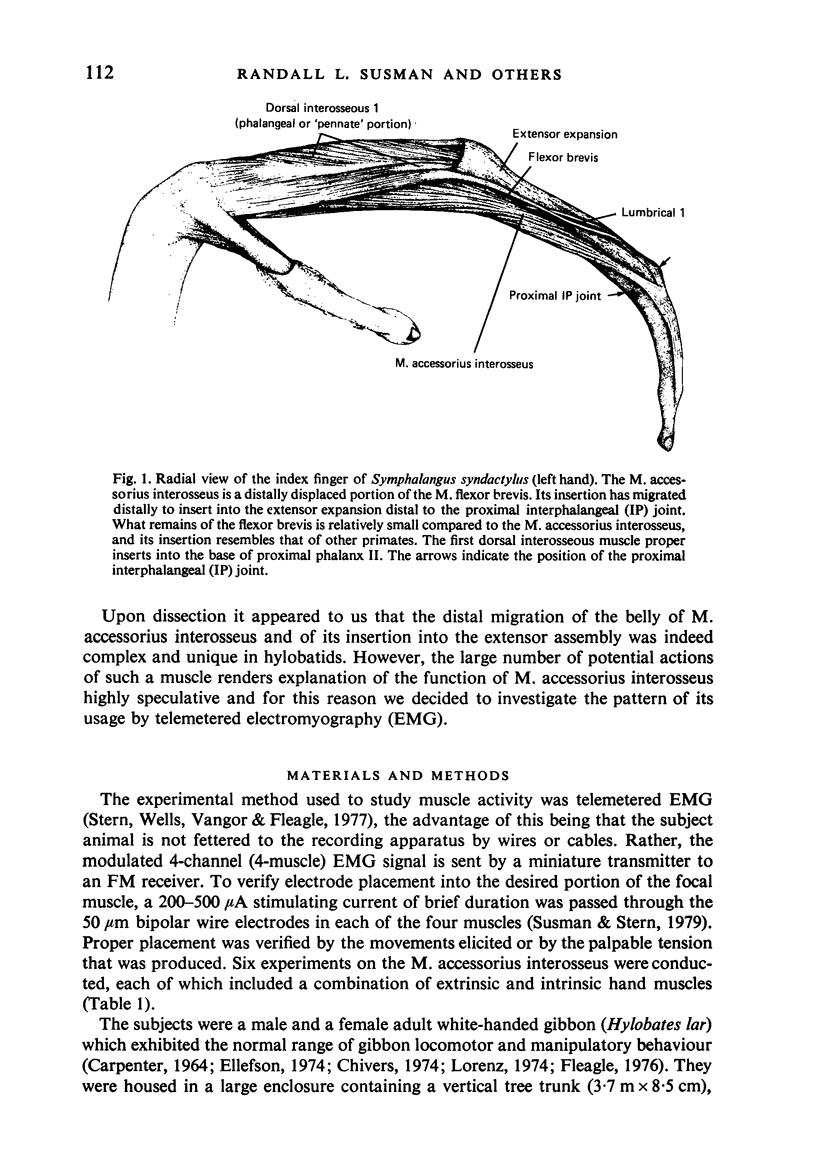
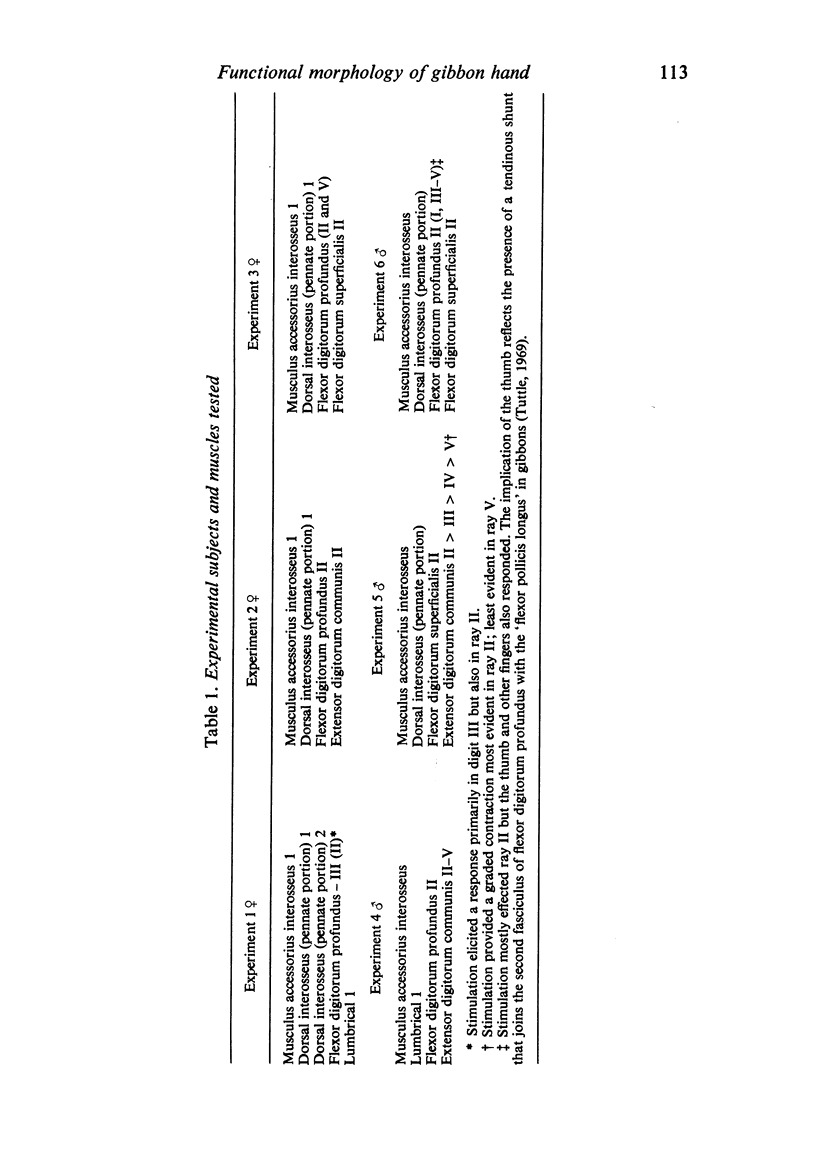
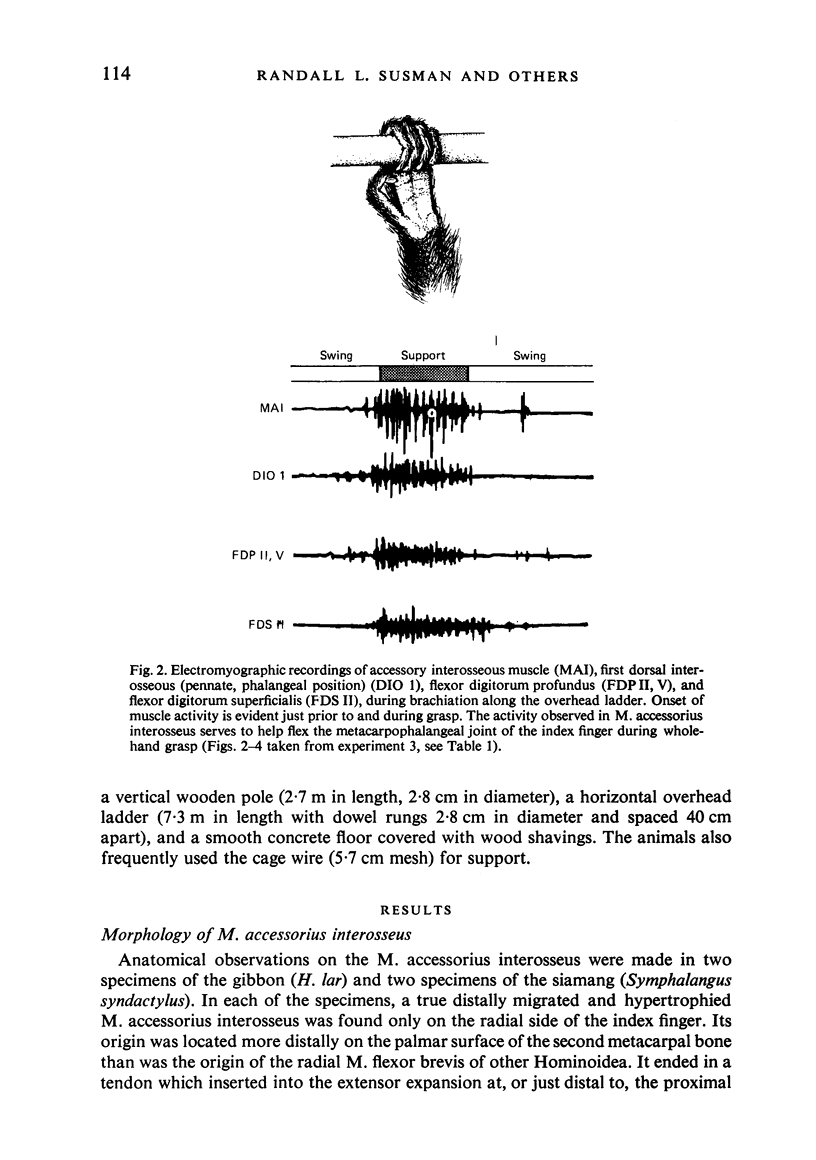
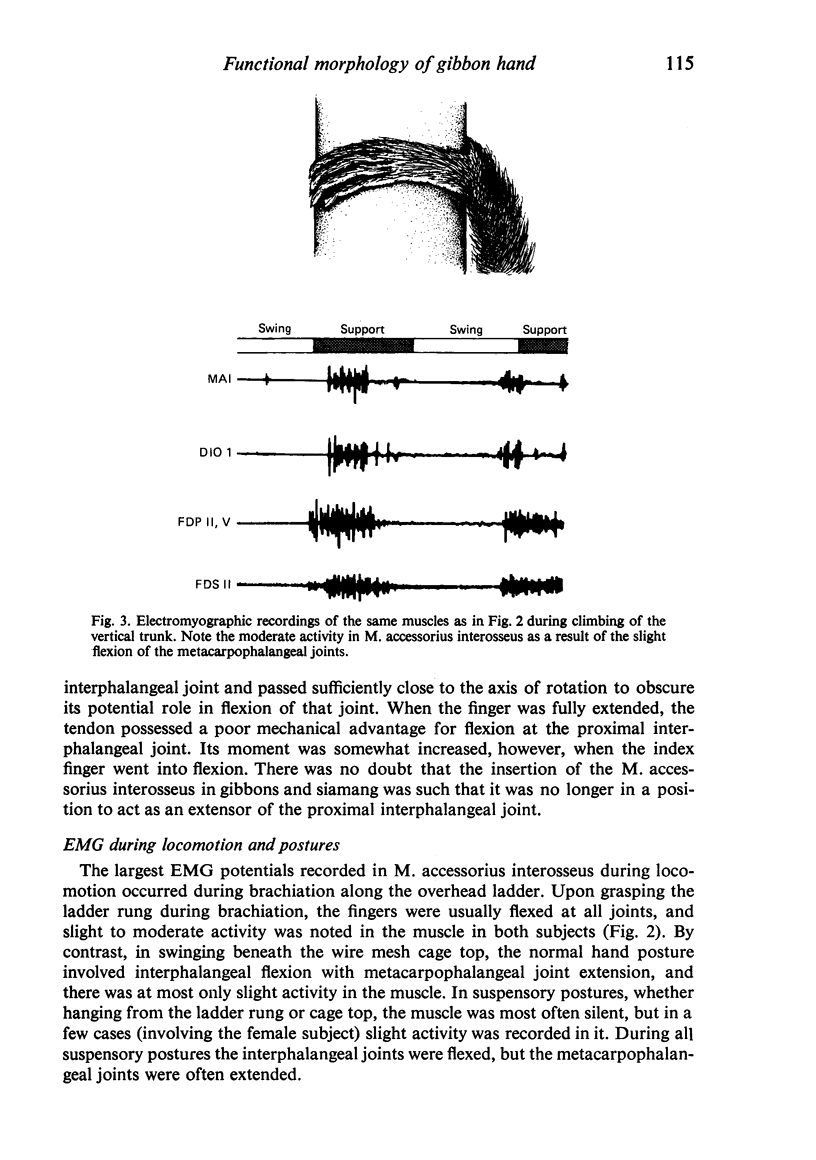

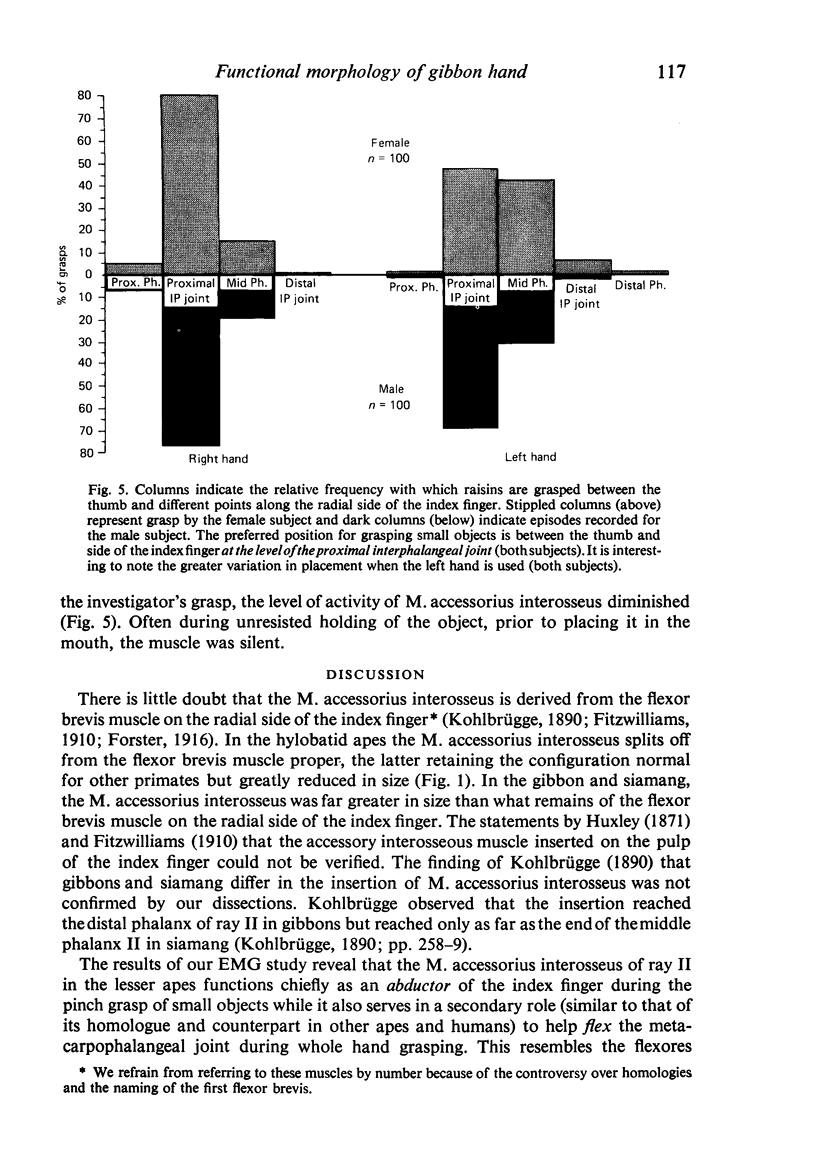
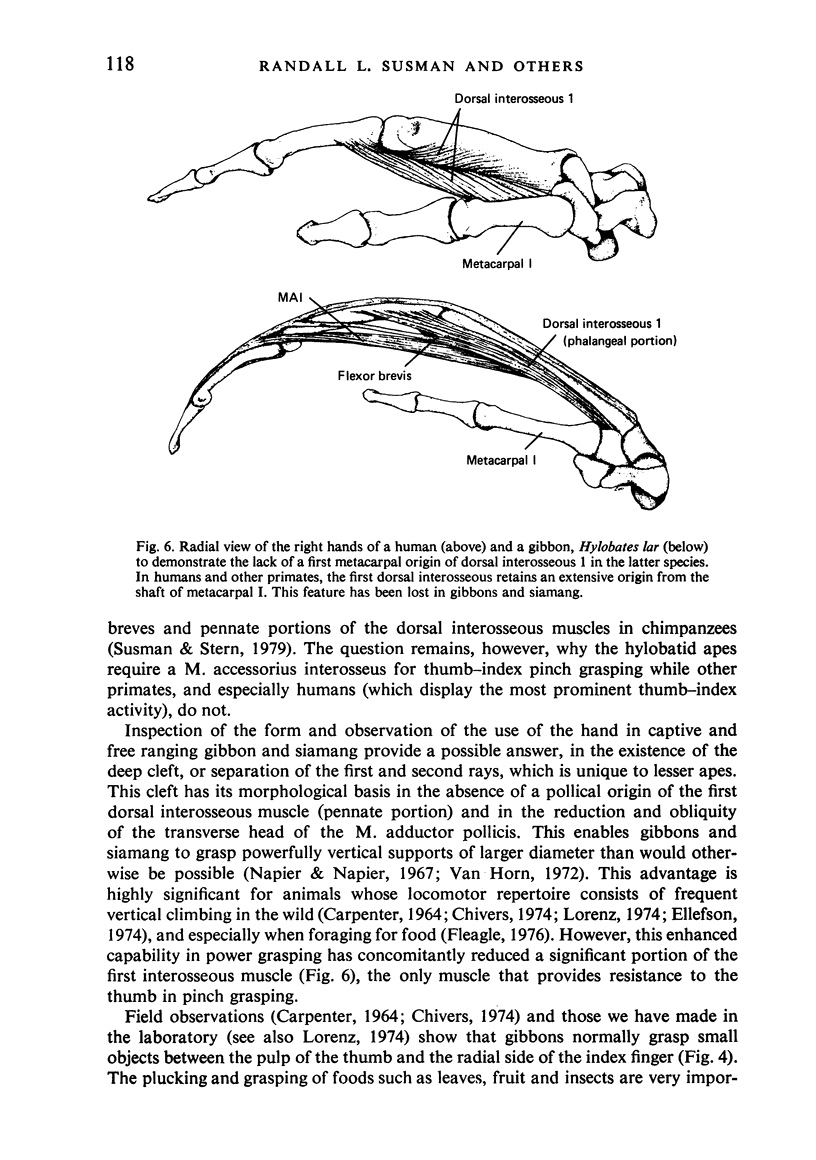
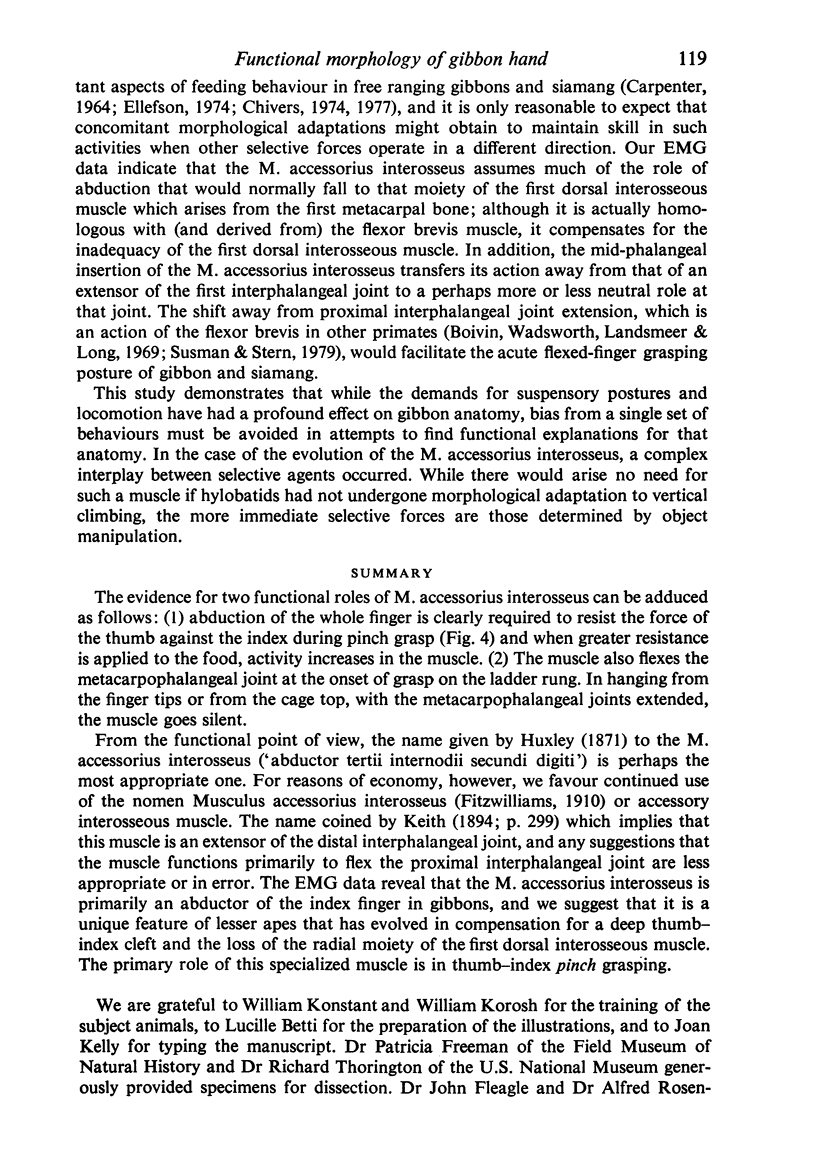
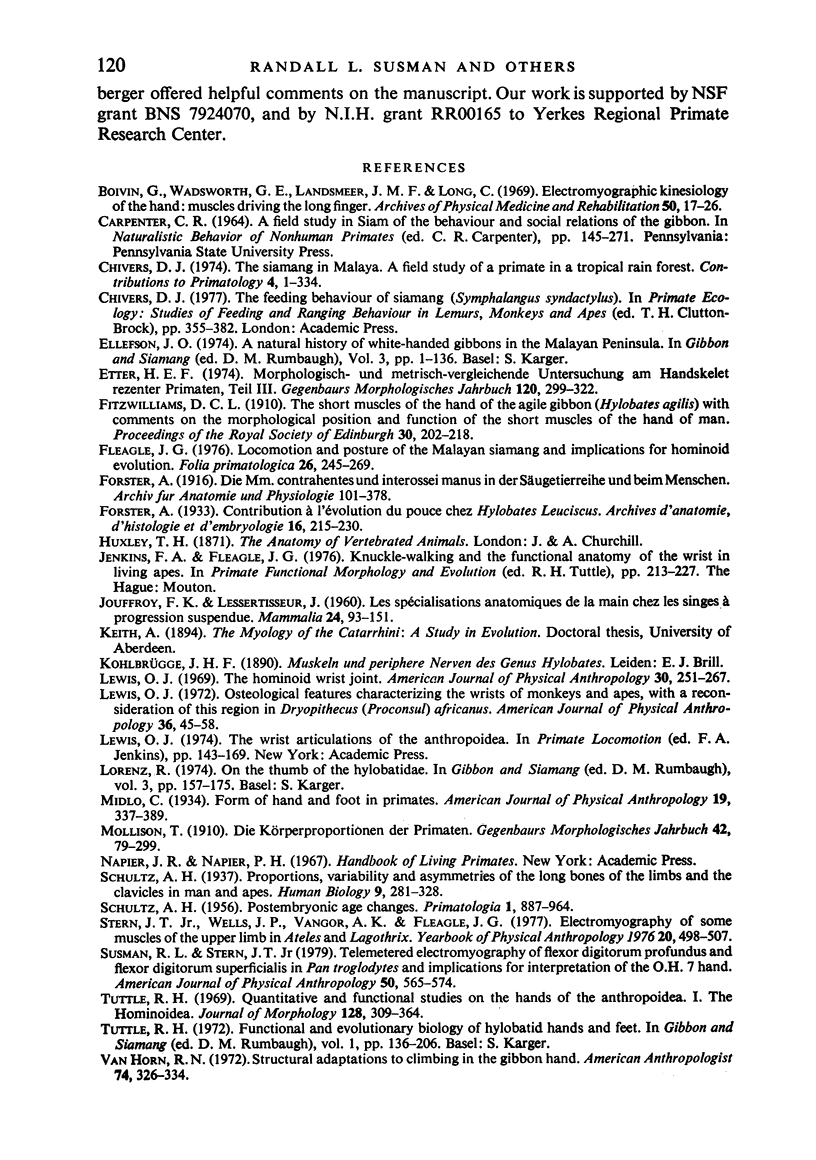
Images in this article
Selected References
These references are in PubMed. This may not be the complete list of references from this article.
- Boivin G., Wadsworth G. E., Landsmeer J. M., Long C., 2nd Electromyographic kinesiology of the hand: muscles driving the index finger. Arch Phys Med Rehabil. 1969 Jan;50(1):17–26. [PubMed] [Google Scholar]
- Etter H. U. Morphologisch- und metrisch-vergleichende Untersuchung am Handskelet rezenter Primaten. Teil III. Gegenbaurs Morphol Jahrb. 1974;120(3):299–322. [PubMed] [Google Scholar]
- Fleagle J. G. Locomotion and posture of the Malayan siamang and implications for hominoid evolution. Folia Primatol (Basel) 1976;26(4):245–269. doi: 10.1159/000155756. [DOI] [PubMed] [Google Scholar]
- Lewis O. J. Osteological features characterizing the wrists of monkeys and apes, with a reconsideration of this region in Dryopithecus (Proconsul) africanus. Am J Phys Anthropol. 1972 Jan;36(1):45–58. doi: 10.1002/ajpa.1330360107. [DOI] [PubMed] [Google Scholar]
- Lewis O. J. The hominoid wrist joint. Am J Phys Anthropol. 1969 Mar;30(2):251–267. doi: 10.1002/ajpa.1330300211. [DOI] [PubMed] [Google Scholar]
- Susman R. L., Stern J. T., Jr Telemetered electromyography of flexor digitorum profundus and flexor digitorum superficialis in Pan troglodytes and implications for interpretation of the O. H. 7 hand. Am J Phys Anthropol. 1979 May;50(4):565–574. doi: 10.1002/ajpa.1330500408. [DOI] [PubMed] [Google Scholar]



